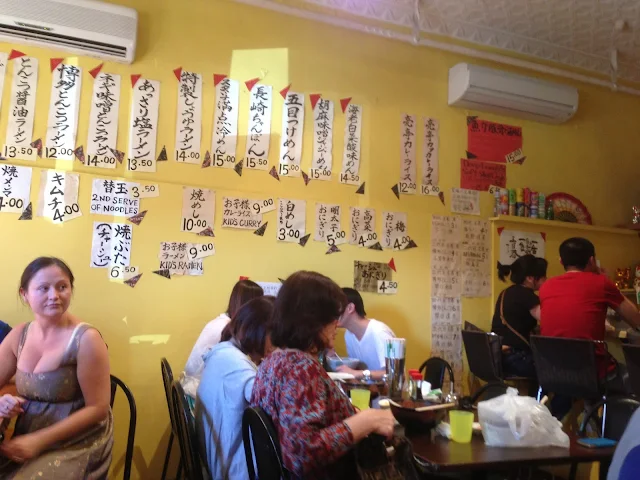There can be such a big number of ramen stalls and restaurants these days in any large city around the world. What makes one more attractive or better in taste or experience when compared to another?
Ajisen stock soup, although still based on pork bone flavours, is not so thick, provides a different taste and yet can be addictive in a different way. The hard boiled eggs have a yellow yolk instead of orange. The X factor for me was the chill condiment, not overly hot, but gives a flavour kick till I finished almost all the soup, once I got the condiment stirred in. Those who prefer a lighter sensation with their ramen can try the Ajisen recipe. On my most recent visit, I tried the in-house version but I also noticed a tom yum version of ramen soup. Is that taking cross- cultural vibes too far? Maybe not, as the ramen model has successfully transposed itself across various cultures and countries.
I found the gyoza (pan-fried dumplings) lovely and with a wonderful blend of cut ingredients inside - they feel and taste like home made yummy. The donburi section of the menu provides the Pai ku don (tenderloin pork ribs with sauce on rice) and what stands out in the entree is the soft shell crab. For vegetarians, there is a version of the adegashi tofu, always a great choice to test the quality of a cafe or restaurant. And I did acknowledge the renkon chips, really suitable to go with beer! These are simply deep fried lotus root slices. Three choices of green tea are available - the premium Genmaicha, premium Sencha and the Houjicha.
Originally from Japan, the Ajisen chain has the logo featuring a little girl named Chii-Chan. In Australia, I understand that there are six more Ajisen outlets apart from the World Square in Sydney - at 270 Forest Road St George and in Melbourne - in Hawthorn, Boxhill, La Trobe Street Melbourne Central, Glen waverley and at 130 Bourke Street in the CBD.
Ajisen hailed from Kumamoto on Japan's southern island of Kyushu. Well known for its iconic castle, the prefecture also hosts a variety of universities - and there in I can see the connection between a steady good reliable ramen model and a large potential market. I recall being in Kumamoto many years ago and loved the character of the island, with impressive memories as well of Oita and of course Nagasaki. Even though we are on the other side of the Pacific, I feel fortunate that we can have access to so many varieties of ramen from Japan.













